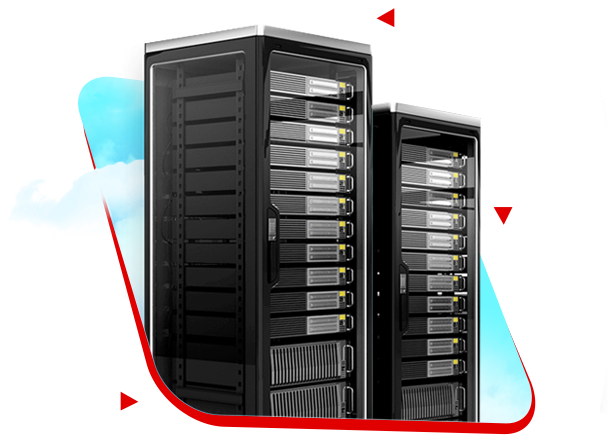
Block Storage is a data storage service where each storage volume acts as a separate hard disk. In block storage, data is stored in fixed-size sections called blocks. Each block is associated with a unique address, and the address is the only cloud data assigned to each block.
Since block storage plays an important role in many enterprise applications today, some cloud vendors offer block storage services alongside their other cloud services. Some of the block storage services in the cloud are:
- AWS Elastic Block Storage
- Google Cloud Persistent Disks
- Rackspace Cloud Block Storage
In this article, we will talk more about what block storage is, its uses and how it differs from other cloud storage spaces.
An introduction to Block Storage
Table of Contents
To manage block storage, media-independent software monitors storage and how blocks are placed and organized on storage drives. This software also recovers the data and uses cloud data to locate the desired blocks and then organize the data in them into complete files. When a user or application requests block data storage, the underlying storage system reassembles the data blocks and serves the data to the user or application.
Block storage is controlled by the server-based operating system and is generally available via Fiber Channel (iSCSI) or Fiber Channel over Ethernet (FCoE) protocols. Block storage is ideal for mission-critical applications that require consistent input/output (I/O) performance and low latency, and is often used in storage area network (SAN) environments instead of file storage.
Applications of block storage
Block storage supports critical workloads and compact data; But organizations are turning to the cloud for block storage; Because they are looking for more efficient and flexible ways to support their workload. Since block storage volumes are treated as separate hard disks, this approach works well for storing these applications:
- Email servers such as Microsoft Exchange use block storage instead of file-based or network-based storage systems.
- Block storage is also used for RAID storage. With RAID, multiple independent disks are combined for data protection and performance. Block Storage’s ability to create individually controlled storage volumes makes it suitable for RAID.
- The Virtual Machine file system is another common use for block-level storage. Virtualization vendors such as VMware support block storage protocols that can improve migration performance and scalability. Using SAN for block storage helps virtual machine (VM) management to write non-standard SCSI commands.
Comparing the performance of Block Storage with other storages
In the cloud service, memory resources can be used in three formats: File, Block, and Object. Block Storage services are relatively simpler compared to the other two formats, i.e. File Storage and Object Storage; Because in practice, block storage is like a hard drive that is provided on the network platform.
-
Block Storage in comparison with File Storage
While there are advantages to using Block Storage, there are alternatives that may be better suited for certain organizations or applications. When faced with block-level storage, two options are on the table: Block Storage and File Storage.
If simplicity is the goal, File Storage may win out over Block Storage; But block storage devices are more complex, expensive and flexible than file storage and provide better performance.
File storage provides a centralized, highly accessible location for files and is generally less expensive than block storage. File Storage uses metadata to organize files, making it a convenient option for organizations to easily store large amounts of data.
The relatively easy deployment of file storage makes it a suitable tool for data protection, and its low cost and simple organization make it useful for local archiving. File sharing within an organization is another common use for File Storage, and its simplicity can be detrimental. File storage has a hierarchical organization; Hence, the more files are added, the more difficult and tedious it becomes to sift through. It is worth mentioning that if performance is the determining factor, Block Storage wins over File Storage.
-
Block Storage in comparison with Object Storage
Instead of dividing files into blocks of raw data, Object Storage collects data as Objects, which contain data and cloud data. Storage blocks do not contain metadata; So, in this sense object storage can provide more context about the data, which is useful in classifying and customizing files. Each object has a unique identifier that makes locating and retrieving it faster.
Object Storage is unparalleled in scalability. Scaling the architecture in Object Storage only requires adding nodes to the storage cluster. The flexibility and scalability of object storage may be attractive; But some organizations choose to prioritize performance and the best choice for them is Block Storage.
Block storage can be expanded. Another point is that Block Storage provides the possibility to edit additional parts of the file; While Object Storage should be edited as a unit. If part of an object needs editing, the entire object must be available and updated and then rewritten, which may negatively impact performance.
Both Block Storage and Object Storage formats are used in organizations; But the use of block storage is more towards scenarios that deal with a lot of data; such as big data storage and backup archives. For this reason, modern data storage environments such as the cloud are likely to lean towards object-based storage rather than block storage. However, individual needs are always the determining factor as to which storage format is best to use.

Block storage vendors
In addition to HPE, several other large and small storage vendors also offer block storage. The largest external vendors of block storage are Dell EMC, HPE, Hitachi Vantara, IBM and NetApp. Other vendors include: DataDirect Networks, Huawei, Infinidat, Kaminario, Nutanix, Oracle, Pure Storage, Tintri, and Western Digital. The major vendors all have multiple block storage and integrated storage platforms that run block and file on the same arrays.
OpenStack Block Storage (Cinder) is an open source variant of block storage that provides storage block provisioning and management and basic storage capabilities such as snapshot management and replication. It should be noted that other vendors such as IBM, NetApp, Rackspace, Red Hat and VMware also support OpenStack Block Storage.
Checking the speed of block storage
With large vendors such as Dell EMC and Amazon with blockchain products, it will clearly be a supported technology for the foreseeable future. There are advantages and disadvantages to using block storage; But if its disadvantages, such as high cost or complexity in work, are not compatible with the organization, we can replace block storage with a different storage system; Of course, this depends on the organization.
The use of other storage formats may vary depending on the organization’s needs. File Storage and Object Storage may be more suitable for some applications; But block storage is probably the right choice for most applications. If an organization is looking for cloud integration, it will find block storage as a common partner for cloud computing.
The main disadvantage for SAN environments, where most block storage systems are found, is the cost and complexity associated with building and managing the environment. As long as organizations are willing to tackle these obstacles, SAN environments will remain a viable option. With virtualized and converged SAN options on the market today, SAN arrays and their storage blocking will likely continue to grow and meet consumer demand.
Conclusion
What is block storage? We said that Block Storage divides data into different parts called blocks and stores them as independent entities by assigning a unique ID to each one. The created blocks can be placed anywhere and can be stored in various systems and operating systems. In this article, we tried to briefly familiarize you with the concept of Block Storage and its applications.
Frequently asked questions
- What is the volume of block storage?
The block storage volume works like a hard disk and can be used to store any type of file or even install the entire operating system. EBS volumes are located in an available area and are automatically replicated to prevent data loss in the event of a segment failure. However, since they are replicated in only one Availability Zone, you may lose data if the entire Availability Zone goes down, which is highly unlikely.
- Why is block storage suitable for private clouds?
For a deeper dive into private clouds and block storage, check out the IBM Garage virtualization tutorial for extending a virtualized private cloud using block storage and file. The inherent flexibility of blockchain makes it ideal.
- What is the difference between block storage and San Block storage?
Block storage divides data into blocks and then stores those blocks as separate chunks, each with a unique identifier. Next, the SAN places those data blocks wherever they are most efficient.
- How does block storage work?
When a user or application requests data from the block storage system, the underlying storage system reassembles the blocks of data and provides the data to the user or application.
- How can we access the block storage system?
A software program is available to access the block storage system, such as organizing and retrieving data and all the basic functions of file systems.
- What is Block-Level Storage?
In the block-level storage model, data is stored on storage media in fixed-size chunks called blocks. Each block of data is associated with a unique address, and this address is the only cloud data stored in each block.
- What are the disadvantages of block storage?
Connect to the server. When block storage is connected to a server, other servers cannot access it at the same time.
CATEGORY:Blog











